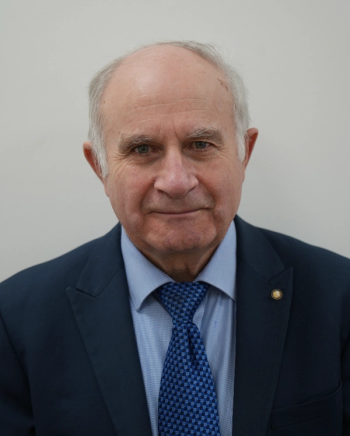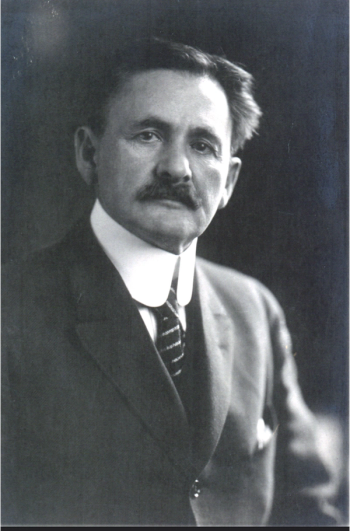
The Future of FT-IR Imaging
Key Takeaways
- FT-IR spectroscopic imaging advancements, like microfluidic channels, enhance in-line monitoring of protein formulations, improving biopharmaceutical quality control.
- Multi-channel designs in FT-IR imaging allow accurate comparison of protein formulations, reducing experimental variability and enhancing high-throughput measurements.
In this continuation of our discussion with Sergei Kazarian and Bernadette Byrne, they address how recent advancements in FT-IR imaging are set to propel the biomedical and pharmaceutical industries forward.
Sergei G. Kazarian, a Professor of Physical Chemistry in the Department of Chemical Engineering at Imperial College London, specializes in advanced vibrational spectroscopy, particularly Fourier transform infrared (FT-IR) and Raman spectroscopic imaging for material and biomedical applications (1). His research focuses on developing FT-IR chemical imaging methods for characterizing a wide range of materials, including pharmaceuticals, nanostructures, forensic samples, and cultural heritage objects, while also applying Raman spectroscopy to study polymeric and biomedical systems (1).
At the 2025 SciX Conference, Kazarian presented his recent collaboration with Professor Bernadette Byrne of Imperial College London, which explores how vibrational spectroscopy techniques can reveal the behavior of therapeutic antibodies (2). In the first part of our interview with Kazarian and Byrne, they discussed how FT-IR spectroscopic imaging provides unique advantages in biomedical and pharmaceutical analysis (3). Here, we focus on the future of FT-IR imaging in biomedical and pharmaceutical analysis. In Part II of our conversation with Kazarian and Byrne, they discuss how recent advancements in FT-IR imaging will lead to increased use in both these fields.
FT-IR imaging has traditionally been viewed as a powerful, but sometimes limited, analytical method due to resolution constraints. What technical or methodological advances have most significantly overcome these limitations in your recent work?
Sergei G. Kazarian (SGK): Previous work by our group has demonstrated the potential of using ATR-FTIR spectroscopic imaging as an in situ measurement technique during protein A chromatography, with a focus on protein A resin fouling and the effect of cleaning-in-place on the column. In this work, we focused on the stability of the IgG eluate obtained after protein A chromatography. The fabrication of a microfluidic channel for the Golden Gate spectroscopic accessory for spectroscopic allowed measurement of IgG formulations at low pH under flow, while heating at the same time. This set-up can easily be adapted to cater to the study of various conditions that may be of interest to formulation scientists, as well as providing an in-line measurement technique in conjunction with other bioprocessing operations, not limited to protein A chromatography. Future work may be focused on the development of more sophisticated channel designs, including multiple channels, making in-line measurements possible.
From your perspective, how might ATR-FTIR spectroscopic imaging contribute to quality control or process analytical technologies (PAT) in the biopharmaceutical industry? Do you foresee it being adopted for routine monitoring during manufacturing?
Bernadette Byrne (BB): This technique has the potential to monitor sample quality and stability in-line as it elutes from the Protein A column, the key isolation step for mAbs and therefore a major checkpoint. The same is true for elution from other chromatography polishing steps. It is also useful as a technique for spot checking at formulation and finish steps as well as for ongoing quality control for sample stored and transported under a range of conditions. Importantly ATR-FTIR is not limited by protein concentration, so it has significant potential for analysis of very high concentrations (up to ~200 mg/ml) of mAb used for patient self-administration, something that is challenging using other analysis techniques.
Looking ahead, what emerging biomedical or pharmaceutical applications do you find most promising for FT-IR spectroscopic imaging? Are there specific challenges—such as sample complexity, data analysis, or instrument design—that still need to be addressed to realize its full potential?
SGK: We expect implementation of multi-channel designs for high-throughput measurements. This area of research is not new, as our previous studies have made use of multi-channel designs for the evaluation of multiple pharmaceutical micro-formulations using ATR-FTIR spectroscopic imaging. However, for the study of protein biopharmaceuticals many opportunities remain. First, multi-channel designs would allow for more accurate comparison of protein formulations at different conditions during the experiment, thereby reducing experimental variability.
Our future research will include demonstration of our pioneering approach with added correction lenses for chromatic aberration, light scattering, and increased spatial resolution in spectroscopic imaging.
We expect to continue with new development in FT-IR spectroscopic imaging and its application to a broad range of novel areas.Our work aims to reveal new insights into biopharmaceuticals and their behavior during purifications and isolation, so the next steps will be made in this direction, and we expect more collaboration in the field with biopharmaceutical companies. We also expect new developments into the design of new microscopes and spectrometers, such as combining the use of a QCL powerful sources.
Based on our recent research, FT-IR spectroscopic imaging could evolve into a powerful method for routine online monitoring analysis by connecting flow cells to process lines in purification, based on the current research. It could also be used for inline analysis when suitable fiber optics are available, such as bundling thousands of mid-infrared (MIR) optical fibers with a focusing device on an array detector. With such advances, spectroscopic imaging for process analysis will become even more useful and widespread, combined with machine learning (ML) techniques to realize its full potential in many areas.
References
- Imperial College London, Sergei G. Kazarian. Imperial College London. Available at:
https://profiles.imperial.ac.uk/s.kazarian (accessed 2025-11-07). - Imperial College London, Bernadette Byrne. Imperial College London. Available at:
https://profiles.imperial.ac.uk/b.byrne (accessed 2025-11-07). - Wetzel, W. Using FT-IR Spectroscopic Imaging in Both ATR and Transmission Modes. Spectroscopy. Available at:
https://www.spectroscopyonline.com/view/using-ft-ir-spectroscopic-imaging-in-both-atr-and-transmission-modes (accessed 2025-11-07).
Newsletter
Get essential updates on the latest spectroscopy technologies, regulatory standards, and best practices—subscribe today to Spectroscopy.





